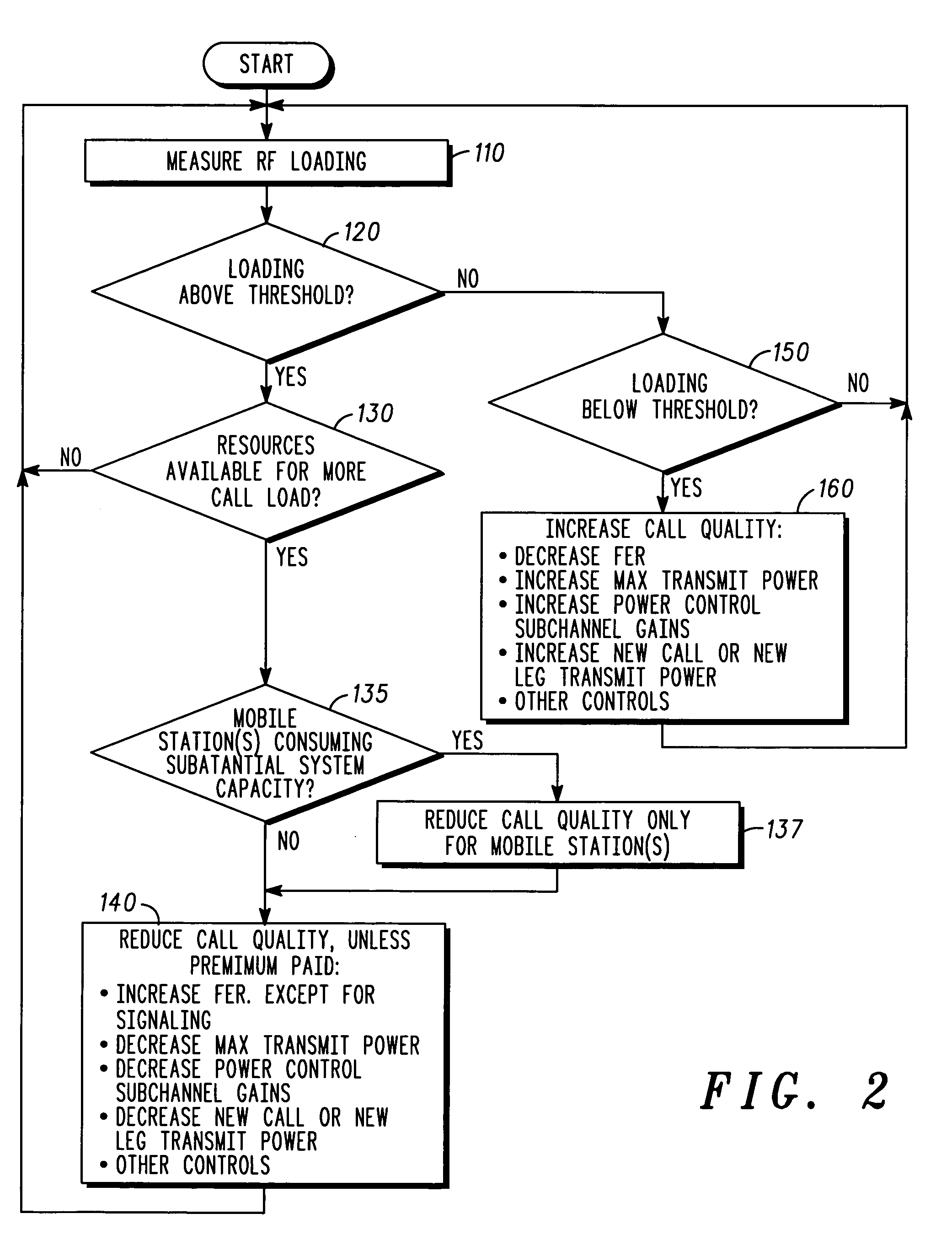Adaptive power control method for cellular systems
a power control and cellular technology, applied in power management, transmission monitoring, wireless commuication services, etc., can solve the problems of inconvenient system operation, reduced system capacity from an rf perspective, and insufficient load or call traffic over the system in most cases. highly non-uniform distribution of load or call traffi
- Summary
- Abstract
- Description
- Claims
- Application Information
AI Technical Summary
Benefits of technology
Problems solved by technology
Method used
Image
Examples
Embodiment Construction
[0010]FIG. 1 is a block diagram depicting a cellular communication system 100. Cellular communication system 100 includes mobile switching center (MSC) 50 coupled to base station controller (BSC) 40. Base station controller 40 is coupled to base stations (BTS) 10, 20 and 30. Base stations 10-30 are coupled to mobile stations 60, 61, and 62.
[0011] Each mobile station 60-62 is coupled to at least one of the base stations 10-30. Mobile station 60 is coupled to each base station 10-30 via mobile links 71, 72 and 73 respectively. Each of these mobile links may also be referred to as “call legs” or “soft handoff legs”. Mobile station 60 is coupled to each of the base stations 10-30 since it is in “soft-handoff” (SHO) with these base stations (and thus has multiple soft-handoff legs). The base stations are constantly transmitting the same data for diversity benefits. Within a call, base stations or soft-handoff legs may be dropped and others may be added.
[0012] Mobile station 61 is couple...
PUM
 Login to View More
Login to View More Abstract
Description
Claims
Application Information
 Login to View More
Login to View More - R&D
- Intellectual Property
- Life Sciences
- Materials
- Tech Scout
- Unparalleled Data Quality
- Higher Quality Content
- 60% Fewer Hallucinations
Browse by: Latest US Patents, China's latest patents, Technical Efficacy Thesaurus, Application Domain, Technology Topic, Popular Technical Reports.
© 2025 PatSnap. All rights reserved.Legal|Privacy policy|Modern Slavery Act Transparency Statement|Sitemap|About US| Contact US: help@patsnap.com



